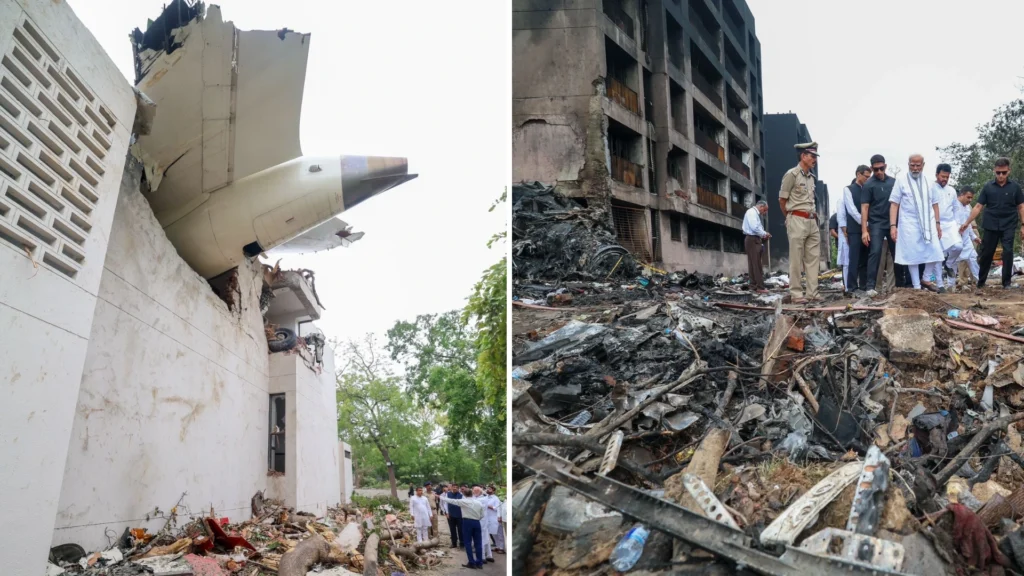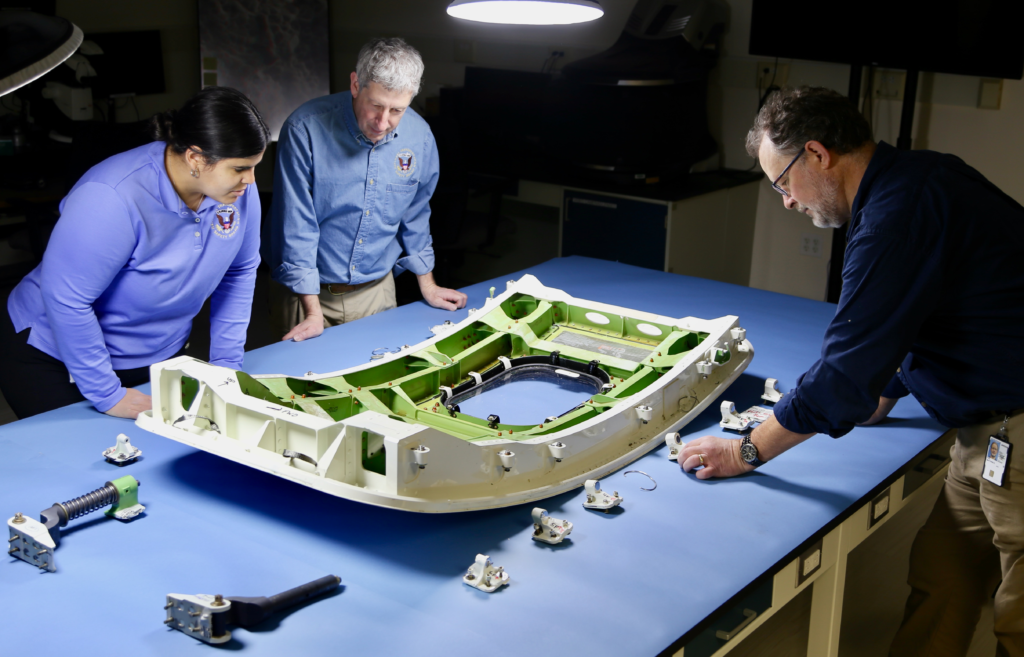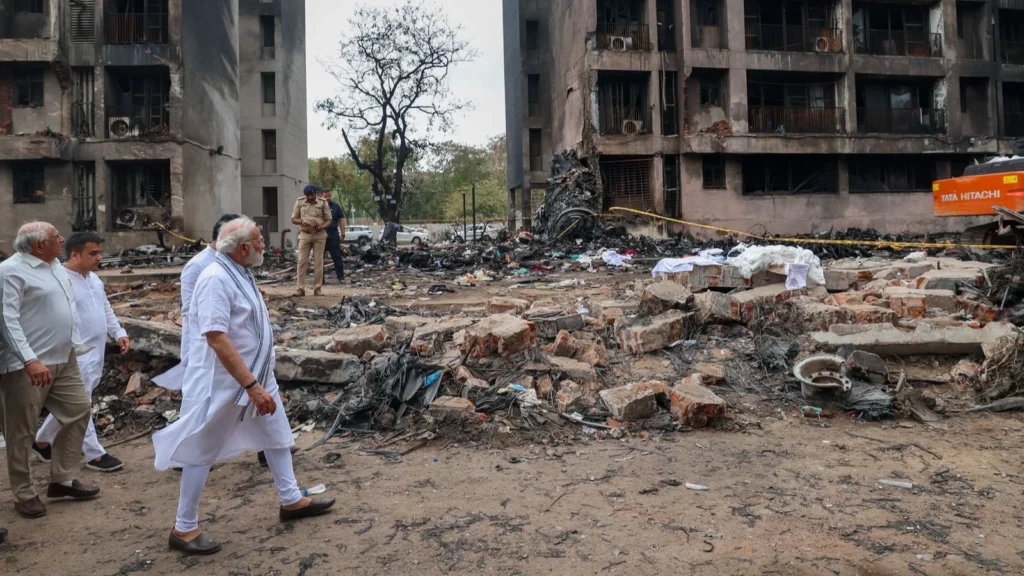
Дели. Бюро по расследованию авиационных происшествий (AAIB) намерено опубликовать предварительные выводы о крушении Boeing 787-8, произошедшем 12 июня.
Самолет, выполнявший рейс AI171 из Ахмедабада (AMD) в Лондон Гатвик (LGW), упал через несколько минут после взлета, убив 241 из 242 пассажиров и членов экипажа на борту, а также несколько человек на земле.
Эта трагедия знаменует собой самую смертоносную авиакатастрофу в Индии за последние 40 лет и первую в истории катастрофу с участием Boeing 787 Dreamliner. Учитывая его глобальное значение, ожидания в отношении объема и глубины первоначального доклада AAIB высоки.
 Фото: ПМ Нарендра Моди X Handle
Фото: ПМ Нарендра Моди X HandleAir India 787 обвалилась
Предварительные доклады ААИБ традиционно служат фактическим обзором, а не окончательным анализом.
Исторически эти ранние документы описывают основные детали, такие как спецификации самолета, учетные данные экипажа, погодные условия, последовательность несчастных случаев и статус расследования.
Они обычно имеют длину 4-5 страниц и делятся на стандартные разделы: общая информация, данные о самолетах и экипажах, описание несчастных случаев, анализ обломков и любые первоначальные рекомендации по безопасности.
В прошлых инцидентах эти отчеты не содержали твердых выводов или причинно-следственных оценок. Вместо этого они стремились установить документированный след известных событий и фактов, связанных с крушением.
Однако, учитывая беспрецедентные масштабы катастрофы в Ахмедабаде, этот отчет может отклоняться от предыдущих моделей как по глубине, так и по содержанию.
 Изображение: Pexels and Compounded by Aviation A2Z
Изображение: Pexels and Compounded by Aviation A2ZГлобальное давление для своевременного и проницательного отчета
Международная организация гражданской авиации (ИКАО) рекомендует опубликовать предварительный отчет в течение 30 дней после аварии.
В то время как Индия юридически не обязана соблюдать эту временную шкалу, AAIB, вероятно, будет соблюдать ее, учитывая глобальный контроль и общественный спрос на прозрачность.
Окончательные отчеты обычно следуют в течение года, но авиационные эксперты предостерегают от преждевременных выводов. Расследования авиакатастроф сложны, часто с участием каскада технических и человеческих факторов.
Отсутствие четкого первичного триггера в этом случае только усиливает необходимость в тщательном многослойном зонде.
 Фото: NTSB
Фото: NTSBСтруктура и содержание предыдущих предварительных отчетов ААИБ
Типичные предварительные отчеты AAIB содержат следующие структурированные разделы:
- Общая информация: Включает номер рейса, оператора, регистрацию самолета, время / местоположение крушения и эксплуатационные детали.
- Информация о самолетах: Подробная информация о возрасте самолетов, сертификации, истории двигателей, недавнем техническом обслуживании и известных проблемах.
- Информация о экипаже: Лицензии пилотов, медицинское обслуживание, одобрение и опыт полета, как в целом, так и на тип самолета.
- Информация об аэродроме: Планировка аэропорта, услуги УВД, готовность к спасению/пожарному реагированию и навигационные средства.
- Погодные условия: Метеорологические отчеты и наблюдения во время взлета и аварии.
- Описание несчастного случая: Пошаговая разбивка событий полета, связь в кабине пилота, сигналы тревоги и процедурные ответы.
- Разрушение и воздействие Анализ: Наблюдения с места аварии, характер повреждений и состояние компонента.
- Сбор доказательств: Восстановленные предметы - бортовые регистраторы данных (FDR), голосовые регистраторы кабины пилота (CVR), записи наблюдения и т. Д.
- Прогресс расследования: Принятые меры, проанализированные данные и проведенные до сих пор интервью.
- Временные рекомендации (если таковые имеются): Меры предосторожности рекомендуются до выпуска окончательного отчета.
Эти разделы направлены на представление основанного на фактических данных отчета об аварии без предварительных выводов. В некоторых случаях они также включают краткосрочные рекомендации по предотвращению потенциальных рисков в ходе текущего расследования.
 Фото: ПМ Нарендра Моди X Handle
Фото: ПМ Нарендра Моди X HandleПочему этот предварительный отчет может отличаться
Масштаб, тип самолета и глобальное внимание, связанное с крушением в Ахмедабаде, отличают его от любого предыдущего расследования AAIB.
Само число погибших в сочетании с тем фактом, что это первая фатальная авария Boeing 787, добавляет срочности и давления на агентство, чтобы внести ясность, даже на предварительных этапах.
Хотя он может и не дать окончательных ответов, ожидается, что доклад выйдет за рамки обычной документации. Взгляды на исходные данные о полетах, действия экипажа и возможные системные аномалии могут формировать ранние повествования и направлять глобальные протоколы авиационной безопасности.
Оставайтесь с нами. Следуйте за нами в социальных сетях для последних обновлений.
Присоединяйтесь к нам в Telegram Group для последних обновлений авиации. Следуйте за нами в Google News
Singapore Airlines отреагировала на критику Air India
Авиакатастрофа Air India 787: чего ожидать от предварительного отчета AAIB? Впервые появился на Aviation A2Z.















